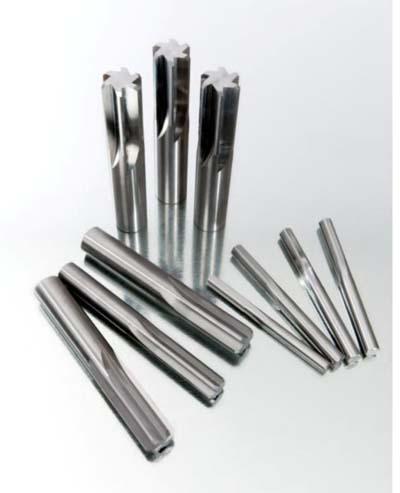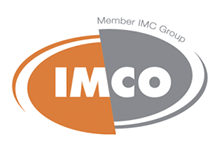
When you build something as massive as planes, maintaining production timelines is critical. One delay can set the entire project back months. And every project faces one sooner or later. When the timeline and the success of a project pivot on custom tools, the spotlight is on the supplier. It's show time. IMCO Carbide Tool experienced one of these situations recently.
Sales Support Specialist Louanne Dennis calls them "moment of truth situations," when an extraordinary occurrence redefines the relationship between customer and supplier. Solving a moment-of-truth situation, she said, through "out-of-this-world service" strengthens ties within the team, which always includes the customer. Extreme conditions and intense mutual effort forge a deeper, more personalized relationship between supplier and customer, evolving well beyond the traditional commitment.
"With these extraordinary situations, it takes a team of experienced people to make things happen," Ms. Dennis remarks. "Everyone on the team understands what's at stake and steps up to do their part. The team for this project consisted of IMCO, Tool & Gage Associates and personnel from our aerospace customer. We did exactly what they needed, exactly at the timeline they needed."
When the aerospace customer needed to source custom reamers, they knew from experience that timing was everything. They also knew that not all machine tool suppliers would be able to pull it off. "We had an emergent requirement for custom tools to produce a part of major significance in support of an ongoing program," comments the customer.
Looking for a solution that would avert any long-term impact on program cost and scheduling (and keep customer satisfaction high), they talked with IMCO representative Mark Smith, who happened to call on him that day. "They needed specially sized reamers in more than 42 configurations, all solid carbide," Smith relates. "They were going to be used in extremely high-value material to create very critical, close-tolerance holes in sophisticated aerospace parts. I told them IMCO would be the best source to solve the problem."
IMCO had worked closely with more than one of Smith's customers developing special tools and the results had received high marks all around. He knew IMCO could make it happen if the production timeline could be worked out. So he and Doug Ellis, the sales representative of Tool & Gage Associates, brought the job to IMCO for confirmation.
Ms. Dennis expedited the project. "Tool & Gage Associates and the aerospace customer had a need," she said. "They called us. We listened." Ms. Dennis worked directly with the customer to set priorities and develop a timetable for deliveries. IMCO received the first set of orders from Tool & Gage Associates at the end of August. The special-purpose reamers were very large, made to demanding specifications in more than a dozen different sizes. Everyone was aware that the stakes were high.
"With these things there can sometimes be haste and angst," remarked the customer, "but they were quite flexible with us."
The first tools shipped just eight days after the orders arrived. IMCO shipped each batch next-day delivery directly to Ellis' home. Ellis then hand delivered them to the plant, where they were immediately put to use. "At times," Smith recalls, "we'd get the requirements on Saturday and IMCO would ship the tools on Monday." On one occasion, the specifications changed and tools had to be returned to IMCO for resizing. The tools were received, resized and sent back within 48 hours.
According to the customer there were absolutely no issues or problems or parts lost because of the cutting tools. The tools worked from the start to the end and they were able to produce several thousand of the parts on schedule, which was crucial to the program. The timetable was inviolate and the tools arrived every time true to schedule and performance requirements. The satisfaction level with the tools and the service was very high for every member of the team, from the customer participants to the sales reps.
Smith thought back over his nearly 40 years in the industry and said emphatically, "I've had other end mill lines and, believe me, they would never do what IMCO did. When the customer saw how IMCO reacted, they just stayed with them through the whole thing." The aerospace customer continues to use the special reamers and have since placed even more orders for other tools. Before this project, they had used very few IMCO products. That has changed for obvious reasons: they perform very well.
And when the opportunity presents itself, IMCO is used instead of other suppliers where and when appropriate. "The key was that IMCO was able to make the short time-flow commitment and they lived up to it," he states. He and IMCO's Ms. Dennis are now on a first-name telephone and e-mail basis.
"When something monumental comes your way and you know that others may have said it couldn't be done or didn't even try that's a terrific challenge," Ms. Dennis comments. "This was truly a moment-of-truth situation and everyone stepped up to the plate and delivered."
Contact Details
Related Glossary Terms
- milling machine ( mill)
milling machine ( mill)
Runs endmills and arbor-mounted milling cutters. Features include a head with a spindle that drives the cutters; a column, knee and table that provide motion in the three Cartesian axes; and a base that supports the components and houses the cutting-fluid pump and reservoir. The work is mounted on the table and fed into the rotating cutter or endmill to accomplish the milling steps; vertical milling machines also feed endmills into the work by means of a spindle-mounted quill. Models range from small manual machines to big bed-type and duplex mills. All take one of three basic forms: vertical, horizontal or convertible horizontal/vertical. Vertical machines may be knee-type (the table is mounted on a knee that can be elevated) or bed-type (the table is securely supported and only moves horizontally). In general, horizontal machines are bigger and more powerful, while vertical machines are lighter but more versatile and easier to set up and operate.
- sawing machine ( saw)
sawing machine ( saw)
Machine designed to use a serrated-tooth blade to cut metal or other material. Comes in a wide variety of styles but takes one of four basic forms: hacksaw (a simple, rugged machine that uses a reciprocating motion to part metal or other material); cold or circular saw (powers a circular blade that cuts structural materials); bandsaw (runs an endless band; the two basic types are cutoff and contour band machines, which cut intricate contours and shapes); and abrasive cutoff saw (similar in appearance to the cold saw, but uses an abrasive disc that rotates at high speeds rather than a blade with serrated teeth).

